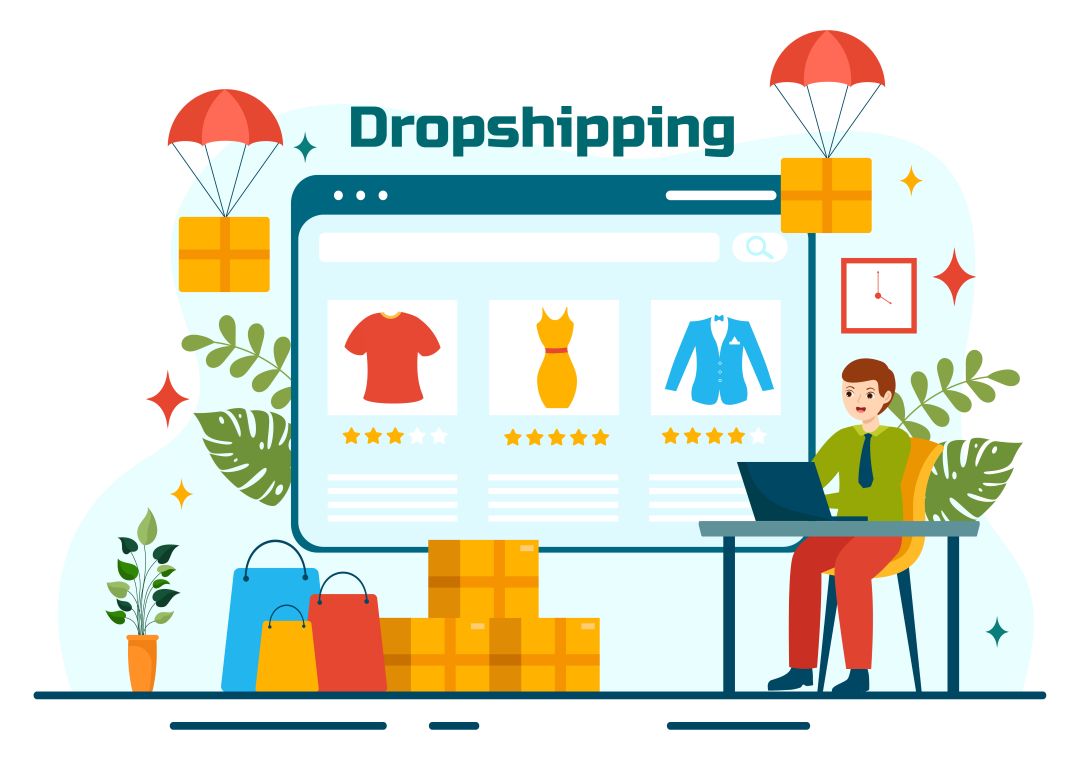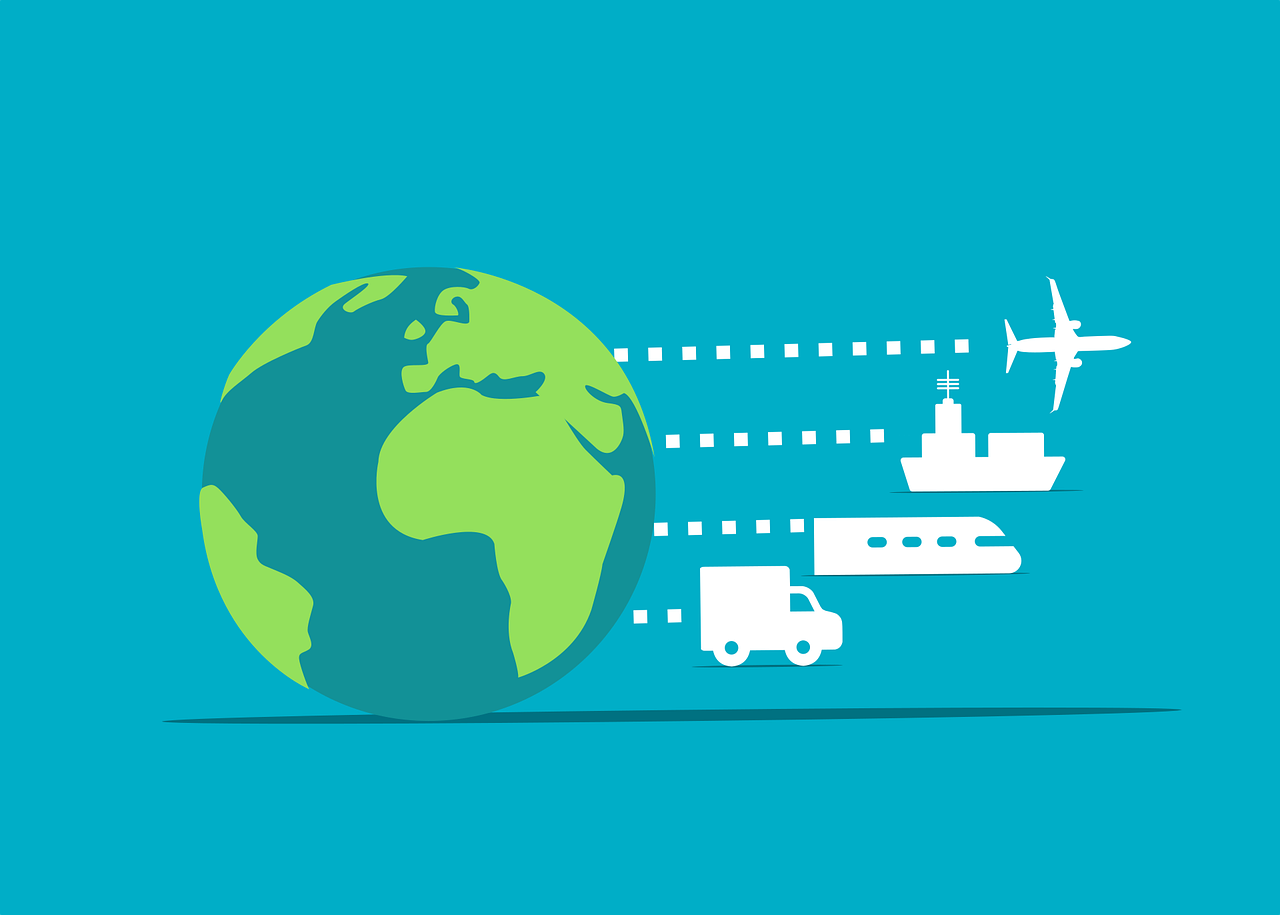Table of Contents
Imagine you’re scrolling through Instagram, and you come across a post featuring a trendy gadget or unique fashion piece. It catches your eye, and in a few clicks, it’s in your cart, ready to be delivered to your door. But have you ever wondered who’s actually selling these products? Often, it’s someone running a dropshipping business.
Dropshipping is a popular business model in e-commerce that allows entrepreneurs to sell products without keeping inventory. It’s ideal for those who want to dive into online retail without the headache of managing storage or upfront product costs. In this article, we’ll dive into what dropshipping is, how it works in the e-commerce landscape, and whether it’s as simple (or complex) as it sounds. Whether you’re an aspiring online entrepreneur or just curious about how that must-have item ends up on your feed, this guide will give you all the insights you need.
What is Dropshipping?
Dropshipping is a retail fulfillment method where a store doesn’t keep the products it sells in stock. Instead, when a store sells a product, it purchases the item from a third party—usually a wholesaler or manufacturer—and has it shipped directly to the customer. This means that the seller never sees or handles the product.
In simple terms, if you run an online store, you don’t need to buy products in bulk and store them. Instead, you just need to list the products on your website. When someone places an order, you buy the product from a supplier, and they ship it to your customer. This approach allows for lower overhead costs and the flexibility to offer a wide range of products without a significant upfront investment.
Why Choose Dropshipping?
Low Startup Costs
One of the primary benefits of dropshipping is its low startup cost. You don’t need to invest heavily in inventory or warehouse space. This makes it an attractive option for new entrepreneurs who want to enter the e-commerce and dropshipping market without a significant financial commitment.
Wide Product Selection
With a dropshipping model, you can offer a wide variety of products without worrying about inventory management. You can easily add or remove products based on customer demand. This flexibility allows you to respond quickly to market trends, which is crucial in today’s fast-paced e-commerce dropshipping landscape.
Location Independence
A dropshipping business allows you to operate from anywhere with an internet connection. This means you can run your store while traveling or from the comfort of your home. The only requirement is to have reliable internet access to manage your orders and customer service.
Easy to Scale
As your business grows, scaling a dropshipping model is relatively straightforward. Since you don’t have to manage inventory, you can focus on marketing and customer service, allowing your business to grow without the constraints of traditional retail.

Challenges of Dropshipping
While there are many benefits, there are also challenges in running a dropshipping business:
Low-Profit Margins
Competition is fierce in the dropshipping space, often leading to lower profit margins. Because anyone can start a dropshipping store, pricing can be competitive, making it challenging to stand out. Careful selection of products and suppliers is crucial to maintaining profitability.
Supplier Reliability
Your business depends on your suppliers to deliver quality products on time. If a supplier fails to fulfill an order or provides poor-quality products, it reflects poorly on your business. Establishing strong relationships with reliable dropshipping suppliers is essential for success.
Limited Control Over Shipping
With dropshipping, you have little control over shipping times and costs. If a supplier takes too long to ship a product, your customer may become dissatisfied. Ensuring your suppliers have a good track record of timely shipping is vital.
Getting Started with Dropshipping
Step 1: Research Your Niche
Before diving into dropshipping, conduct thorough market research. Identify a niche that interests you and has demand. Use tools like Google Trends and social media to gauge what products are trending.
Step 2: Choose Your Dropshipping Suppliers
Research and select reliable dropshipping suppliers. Look for companies with positive reviews and good communication. Popular platforms include AliExpress, SaleHoo, and Oberlo. Ensure they offer products in your chosen niche.
Step 3: Set Up Your E-Commerce Store
Create your online store using user-friendly platforms like Shopify or WooCommerce. Customize your site to reflect your brand and make it appealing to customers. Include high-quality images and detailed product descriptions to attract buyers.
Step 4: Market Your Store
Once your store is set up, it’s time to market it. Use social media, content marketing, and paid ads to attract potential customers. Creating engaging content can help build your brand and establish trust with your audience.
Step 5: Manage Customer Service
Providing excellent customer service is crucial for success. Be responsive to customer inquiries and handle any issues promptly. Satisfied customers are more likely to return and refer others to your store.
Zippyy: Your Partner in E-Commerce
As you start your dropshipping ecommerce business, consider using Zippyy to streamline your logistics. Zippyy simplifies your shipping process by integrating seamlessly with multiple carriers. You can track shipments across 30+ carriers from a single dashboard, ensuring that your customers receive their orders on time.
With Zippyy, you can access up to 30% cost saving on major carrier rates without needing a carrier account. This can significantly reduce your shipping costs and improve your profit margins, making it easier to succeed in the competitive dropshipping market.
Conclusion
In summary, understanding what is dropshipping and how dropshipping works is essential for anyone looking to start an online store. The dropshipping model offers low startup costs, flexibility, and the potential for significant profits. However, it also comes with challenges, such as low profit margins and reliance on suppliers.
By researching your niche, choosing reliable dropshipping suppliers, and leveraging platforms like Zippyy to manage your logistics, you can build a successful dropshipping business. Whether you’re new to e-commerce or looking to expand your current operations, dropshipping can be a viable and profitable business model.
With the right approach and tools, your ecommerce dropshipping journey can lead to success. Sign up today, and explore the endless possibilities that the dropshipping model offers in the e-commerce space.
Frequently Asked Questions (FAQs)
What is dropshipping, and how does it work?
Dropshipping is a fulfillment method where a store sells products without holding inventory. The supplier ships items directly to customers, allowing sellers to focus on marketing.
What are the advantages of using dropshipping for e-commerce businesses?
Dropshipping offers low startup costs, a broad product selection, and location independence, making it ideal for new e-commerce businesses seeking flexibility without inventory management.
What challenges should I be aware of when starting a dropshipping business?
Common challenges include low profit margins, dependency on supplier reliability, and limited control over shipping, making it essential to select trusted suppliers and manage customer expectations.
How can I find reliable dropshipping suppliers?
Reliable suppliers can be found on platforms like AliExpress, SaleHoo, and Oberlo. Look for positive reviews, good communication, and products that align with your niche and quality standards.
What tools or software are essential for managing a dropshipping business?
Key tools include e-commerce platforms like Shopify, supplier apps like Oberlo, and logistics solutions like Zippyy to manage orders, track shipping, and automate fulfillment processes.






